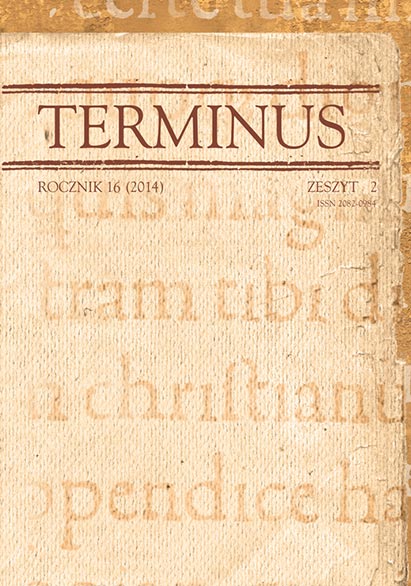Arbor praedicandi. Kilka uwag o dispositio w kazaniach średniowiecznych (na przykładzie kazania Mikołaja z Błonia)
Arbor praedicandi. A few remarks on dispositio in medieval sermons (based on Nicholas of Błonie’s sermo 39 “Semen est verbum Dei”)
Author(s): Lidia GrzybowskaSubject(s): Language and Literature Studies, Studies of Literature, Polish Literature
Published by: Wydawnictwo Uniwersytetu Jagiellońskiego
Keywords: arbor picta; arbor praedicandi; ars praedicandi; late medieval preaching
Summary/Abstract: The main goal of the article is to present the motif of a compositional tree-shaped scheme called arbor picta (arbor praedicandi) and to show it against the field of rhetorical elements such as dispositio and memoria as found in medieval sermons. The basic sources for the analysis of this issue are two fourteenth-century theoretical treatises on the art of preaching (manuals: Libellus artis preadicatorie of Jacob of Fusignano and Tractatulus solennis de arte et vero modo praedicandi of Pseudo-Thomas Aquinas), and one of the sermons from the collection de tempore of fifteenth-century Polish preacher Nicholas of Błonie (Dominica sexagesime: sermo 39 “Semen est verbum Dei”). The problems of arbor praedicandi, which are a part of a broader field of study on the structure of sermons, editorial methods of texts and memorable techniques, were the subject of interest of many researchers such as H. Caplan, O.A. Dieter, S. Khan, S. Wenzel. In Poland, this issue has not yet become a subject of proper study. In order to analyse the scheme in the treatises of Jacob of Fusignano and Pseudo- Thomas Aquinas, and in the sample sermon, the article briefly outlines the existence of topics and images of the tree in the writings of the Middle Ages (eg. lignum vitae, arbor sapientiae, arbor amoris). Then the essay presents fragments from the manuals of Jacob of Fusignano and Pseudo-Thomas Aquinas in which the authors discussed the scheme and explained its importance for the practice of preaching. Analysis of sample sermons – the article uses sermo 39 of Nicholas of Błonie’s collection de tempore – shows the creative use of the tree scheme in the sermon by the Polish preacher (with the specula- tive assumption that Nicholas of Błonie knew Jacob of Fusignano’s theory of preaching). The paper also pays particular attention to the circumstances of the development of the art of preaching in the late Middle Ages in Poland. Finally, the article focuses on the importance of the concept of the sermon as a tree for the elements of rhetoric such as dispositio /divisio /partito and memoria. It proves that the use of the tree scheme in presenting abstract concepts and structuring of text allowed preachers and audiences to visualise vague and often difficult ideas, as well as to describe their relationship within the sermons’ topics. Therefore the use of the schema in the Middle Ages had great significance for ars memorativa and the didactic dimensions.
Journal: TERMINUS
- Issue Year: 16/2014
- Issue No: 3 (32)
- Page Range: 259-283
- Page Count: 25
- Language: Polish

